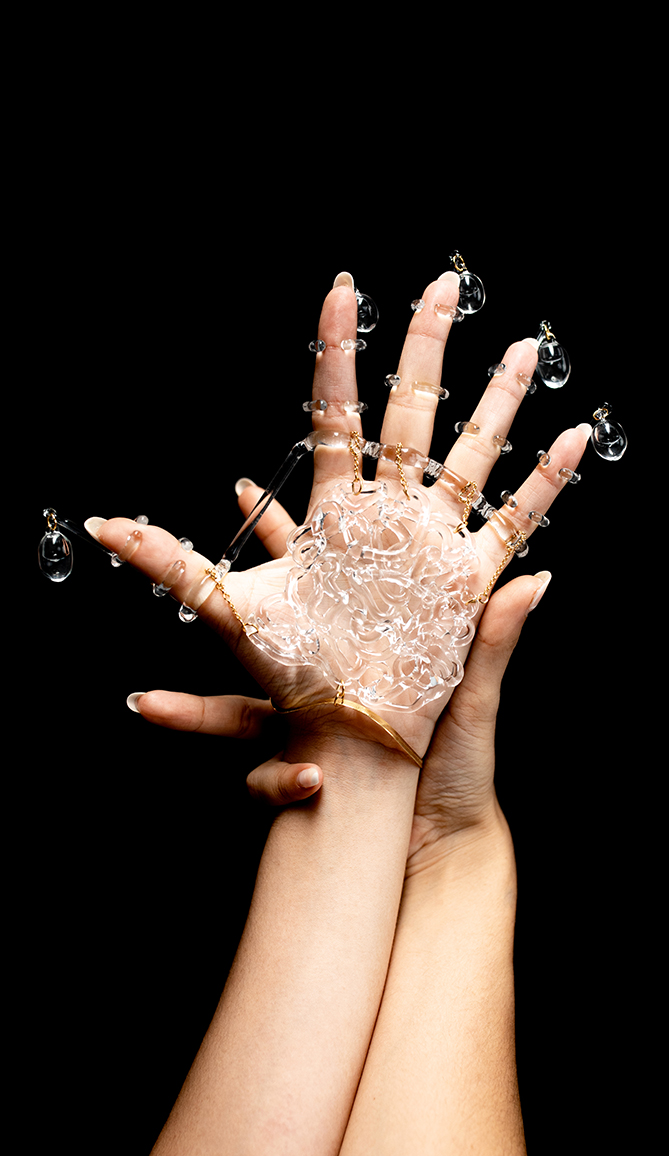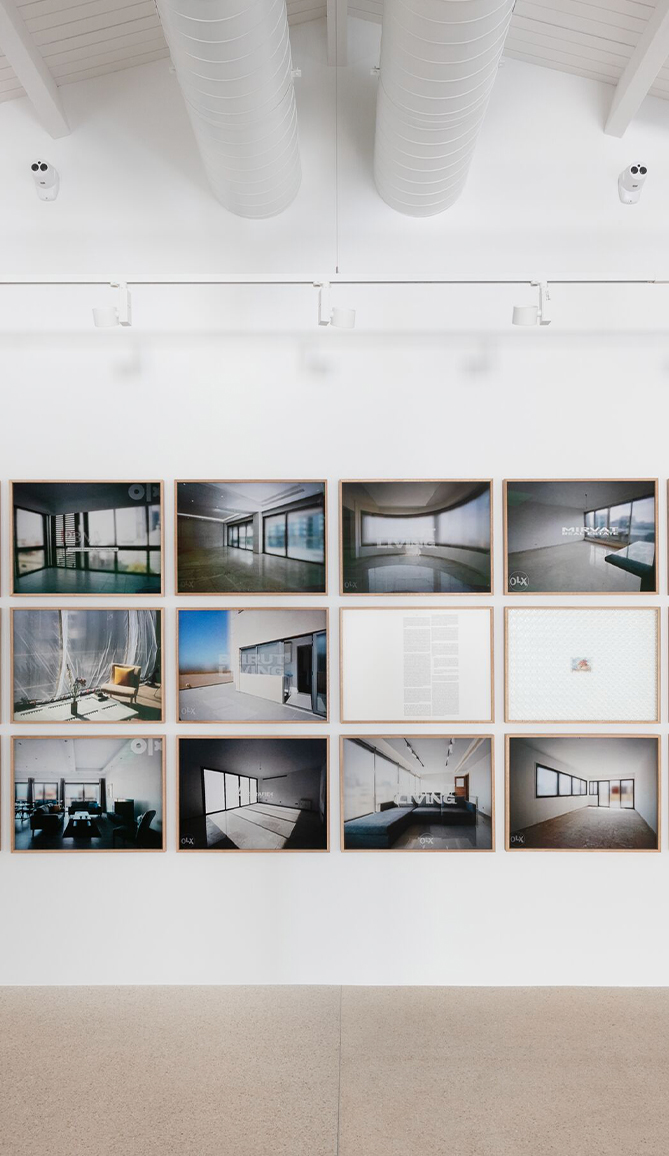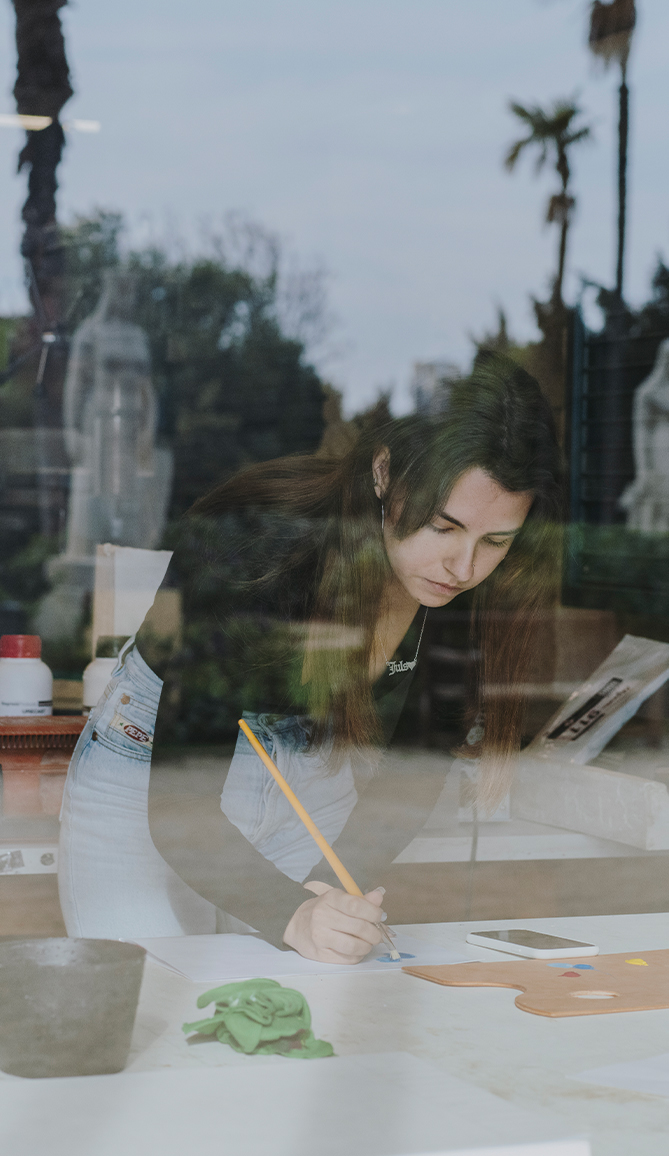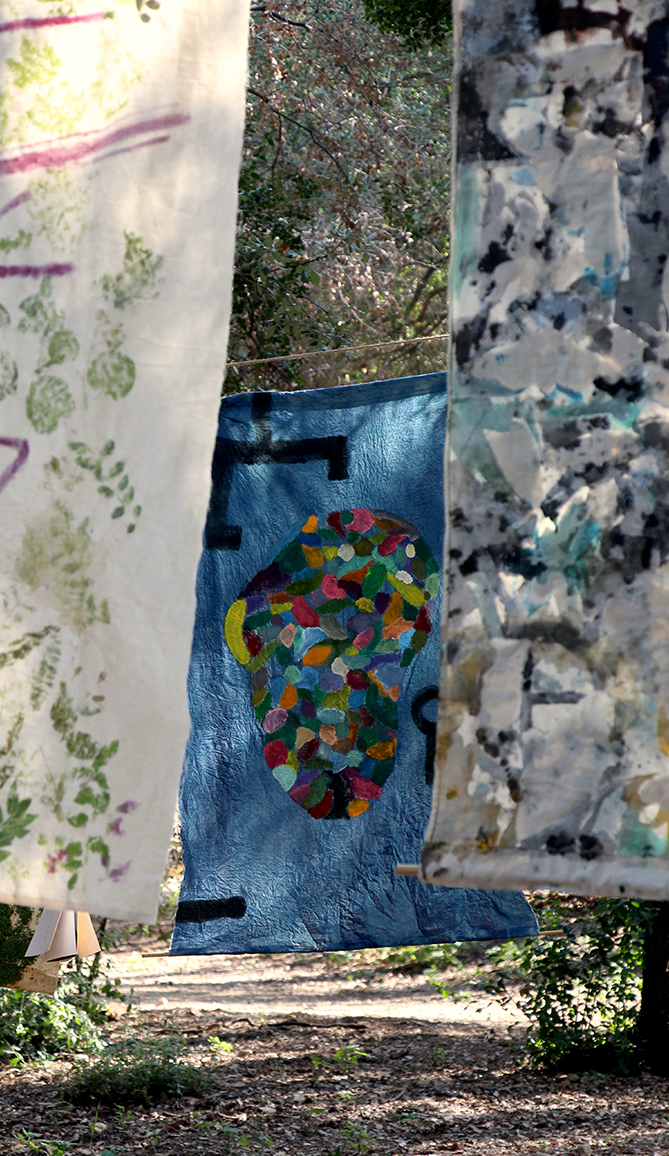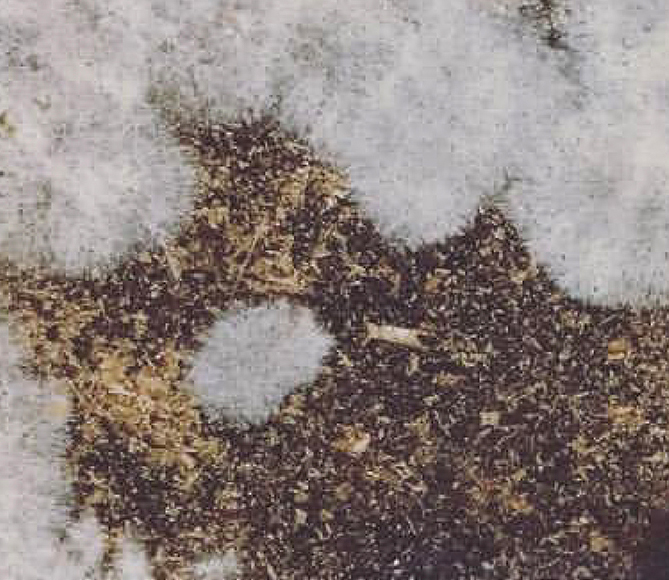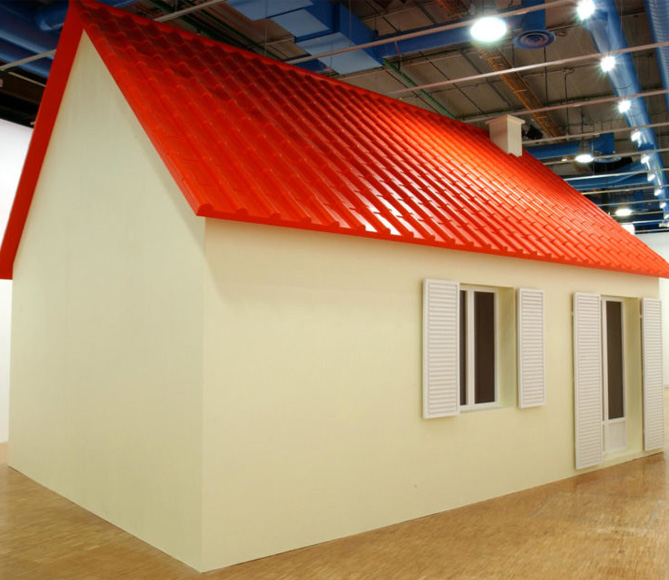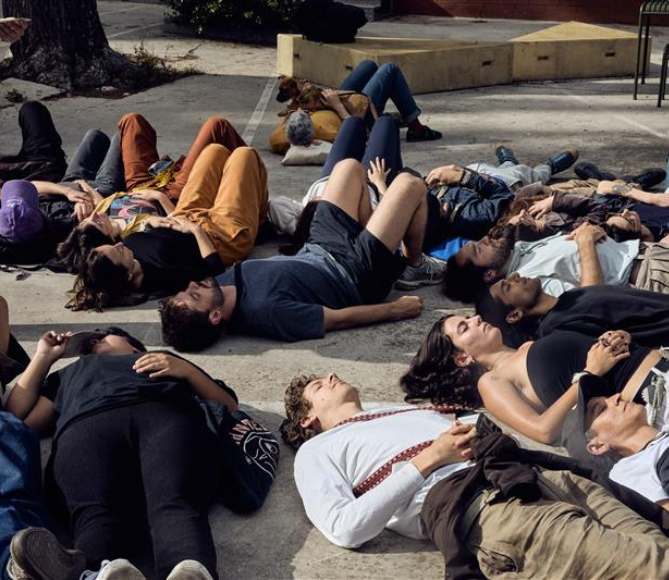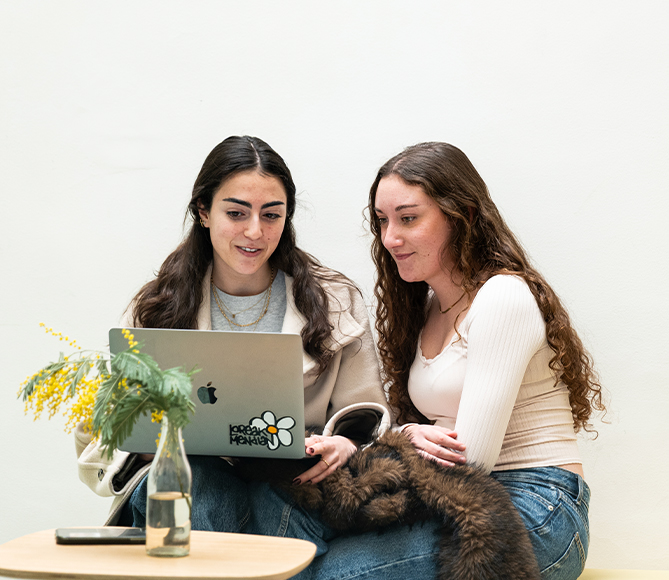Itziar Barrio (Bilbao/New York, 1976) is an interdisciplinary artist producing long-term research based projects involving different agents and collaborators. By rewriting the dominant narratives through which our societies, identities, and realities are constructed, her work opens up new and emancipatory futures. Her survey exhibition was curated by Johanna Burton, and her recent monograph catalog has been published by SKIRA. Her work has been presented internationally at the 14th Shanghai Biennale, Salt Istanbul, ONX Onassis Foundation, MACRO, PARTICIPANT INC, MACBA, Belgrade's Contemporary Art Museum, Museo del Banco de la República, and at the Havana Biennial. She has been recently awarded a 2024 Guggenheim fellowship and has received awards from NYSCA, Brooklyn Arts Council, NYC Department of Cultural Affairs, and Spanish Academy in Rome among others. Barrio’s work has been written about in ARTFORUM, Art in America, The New York Times, The Brooklyn Rail, ART PAPERS and BOMB among many others. She teaches at the School of Visual Arts (NYC) and Sarah Lawrence College (NY).
Zach Blas (West Virginia, 1981) is an artist, filmmaker and writer whose practice addresses the materiality of digital technologies through video, computing, theory, performance and science fiction. His work investigates the lurking philosophies and imaginaries in artificial intelligence, biometric recognition, predictive surveillance, airport security, the Internet, and biological warfare. He has participated in exhibitions and conferences at Tate Modern (London); Walker Art Center (Minneapolis); the Gwangju Biennale; Berlinale (Berlin); Matadero Madrid; and ZKM (Karlsruhe), among others.
Sarah Derat (Paris/London, 1984) works with sculpture, installation and digital technologies, particularly addressing the resonances of artificial intelligence and automation on language, cognitive systems and society through archeology and anthropology. Her work has recently been exhibited at Super Dakota (Brussels), Miart (Milan), Liste Art Fair (Basel); Castor (London); South London Gallery (London); Sónar D + (Barcelona); FRIEZE (London); among others.
Laia Estruch (Barcelona,1981) is an artist whose practice develops in the framework of performance and at the threshold of sculpture, emphasising voice as her main medium: an experimentation device that allows her to explore orality and listening, as well as the performative nature of language, while transiting and inhabiting the objectual and architectural structures she herself designs. Her work has been seen at Joan Brossa Foundation, (Barcelona); La Virreina Centre de la Imatge (Barcelona); Festival Grec / Creació i Museus (Barcelona); Festival Poesia i + (Caldes d’Estrac); Festival Sâlmon (Barcelona); Museu de Valls (Tarragona); Joan Miró Foundation, Espai13 (Barcelona); CentroCentro (Madrid); Botín Foundation, (2018); Picasso Museum (Barcelona); CA2M (Madrid); Chapelle des the Beaux-Arts (París); Antic Teatre (Barcelona); Teatro Pradillo (Madrid); Centro Párraga (Murcia); Antoni Tàpies Foundation (Barcelona); and MACBA (Barcelona), among others.
Elisa Giardina Papa (Medicina, 1979) is an artist whose practice investigates gender, sexuality and labour in relation to neoliberal capitalism and the borders of the Global South. Her work has been exhibited and screened at the 59th International Art Exhibition of La Biennale di Venezia; MoMA’s Modern Mondays (New York); the Whitney Museum (New York); Seoul Mediacity Biennale 2018 (Seoul); XVI Quadriennale di Roma; Flaherty (New York); UnionDocs (New York); and ICA Milano, among others. She has lectured at the Pembroke Center for Teaching and Research on Women (Brown University); the Institute for Gender, Sexuality and Feminist Studies (McGill University); and the Global Emergent Media Lab (Concordia University), among others.
John Menick (New York, 1976) is an artist and writer who works with the moving image and digital media. His work takes the form of the essay, both written and cinematic, to address fiction, history, and the circulation of images. His visual art and films have been exhibited and screened at MoMA (New York); dOCUMENTA (13) (Kassel); the Rotterdam International Film Festival; Palais de Tokyo (Paris); CCA Wattis (San Francisco); and Artists Space (New York). His essays and stories have been published by Walther König and have appeared in frieze, The Believer, Mousse Magazine, BOMB, Spike Art Quarterly, Art in America, and Witte de With Review, among other publications.
Katarina Petrović (Belgrade/The Hague) is an artist and researcher working with language, computation and various physical phenomena including sound, light, vacuum and radio. She makes systems and modular installations in online and offline space using media such as generative text, poetry, sound, software and performance. Petrović holds a MMus (Master of Music) degree from ArtScience Interfaculty, Royal Conservatoire and Royal Academy of Arts, The Hague and an MFA (Master of Fine Arts) from the Academy of Fine Arts, Belgrade. She is an affiliated researcher at the trans-disciplinary research Centre Leo Apostel, Vrije Universiteit in Brussels, a guest lecturer at the postgraduate School of Thinking, VUB and the ArtScience Interfaculty in The Hague. She is the co-initiator of ArtScience Forum platform, feminist art radio Femkanje and a member of an artist-run space Trixie The Hague.
Marc Vives (Barcelona, 1978) sings and swims, between the scenic and the visual. He works with the materiality of voice in its sculptoric potentiality, aiming to infiltrate architectures, landscapes and other bodies, and reformulate an established order. His work has been shown at Rogaland Kunstsenter (Stavanger); Redcat (Los Angeles); etHALL (Barcelona); MACBA (Barcelona); Antic Teatre (Barcelona); CCEMX (Mexico City); Festival Grec (Barcelona); La Casa Encendida (Madrid); MUSAC (Leon); Collegium (Arevalo) o MAC PANAMÀ. He collaborates with other artists and from 2002-2012 he was part of the duo Bestué-Vives, participating in the 53rd Venice Biennale. His field of affect excedes artistic practice and expands to pedagogy, curating or management, aiming to collectively transform the contextual model. Recently, he has curated the cicle Sequence, has created the School of Voice and has been part of the curating team in La Capella. Since 2013, he is also director of GRAF.cat.
The exhibition A wounded matrix. Cracks in artificial creativity, organised by the platform einaidea in collaboration with the Polytechnic University of Valencia, brings together artists, designers and artistic research professionals to reflect upon the collaboration between human creative agents and neural networks, technological entities and surroundings. A Wounded Matrix addresses the debate on the growing automation of creative processes from the point of view of its cracks and grey spaces, its impossibilities and limits, paradoxes and leaks.
How much of a body does an artificial intelligence need in order to be able to culturally legitimise and justify the meaning of its productions? How much of cultural value is inseparable from finitude, from the subjective and mortal experience of the living body? And to what extent can our our practices—humid, grinning, bleeding—hybridise, before being distorted or detracted by that which, from the synthetic generative environment, supposedly helps them? The ongoing hegemonic narrative about the progress of AI narrates the replacement, in certain areas of the imaginary, of what was known as “intuition” or “artistic inspiration” with what we would now call “generative capacity.” In this trance, it seems almost unavoidable to evaluate the perspectives of quantification and automation, partial or total, of cognitive and aesthetic work. In any of its established and recognisable manifestations, the memory of the arts transmutes into immense datasets and historical reflection turns into recombination. The emergence of ideas disembodies. Thus, the persistence of the idiosyncrasies that constitute artistic and design work give rise to doubts and suspicions, formulated both by those who fear the loss of the personal and expressive character of their works—from positions that sometimes make us think of neo-Luddite self-defenses or an incipient “human nationalism”—and by those who would like—following corporate and extractivist interests or certain notions of tech eugenism—to completely outsource their production.
Should chance encounters, traumas, non-normative desires, whims, accidents and noise be considered key elements of art-driven research? Instead of studying the products of artificial creativity—like those dull and gimmicky images produced by various generative algorithms—we want to summon the work of artists who are located within the intermediate, ambiguous, sometimes undecidable space between analog production (that is, inseparable from what we call the body as a sensory and motor apparatus) and creativity assisted by artificial neural networks. Works that are located between computing and intimacy, that defy one or the other or draw their possible limits; that root between the unfolding and exploration of the technical, and the refolding imposed by critical reflection on the media.

Carmen Montiel x einaidea, Study for A Wounded Matrix, 2021
As we witness increasingly high levels of performance by artificial creativity, a deeper dependence on computing is consolidated for any cognitive operation and aesthetic production. This affects both information access and its pre-treatment and distribution; as well as the definition of aesthetic features of cultural objects, particularly in the areas of image generation, interface design, music... Furthermore, advanced computing exerts a notable influence on impact assessment, which relate to the vast majority of decision-making involved in cultural production. As writer Tanya Anand notes: “The more an Uber driver works, the faster they become redundant. The more a journalist reports, the faster a bot learns to write news. The more works artists produce, the faster a deep learning algorithm can imitate all forms of art. By doing our job, we are teaching AI to replace us”.
We ask ourselves about human-machine and machine-machine interactions within artistic research, both at its academic level and at the level that goes beyond the university environment, and is developed in public spaces or art markets. Within the framework of the university, the forms of quantification of knowledge become increasingly dependent on technology, while art-driven research appears as a field whose progressive institutional recognition runs parallel to important transformations in the noosphere. These transformations quickly turn into structuring forces, and their protocols eagerly seek to penetrate artistic research, to account for its hypothetically irreducible qualitative essence, in order to feed growing hopes for optimisation in the fields of learning.
The exhibition A wounded matrix presents a selection of artworks as well as documents and research materials that point to spaces that generative technology can border but cannot occupy or cover; cracks or stains or, if you may, wounds: expressions of a matrix that is inseparable from both its fragility and its impossibility to fully explain itself. It recognises, it hurts, it enjoys, it empathises and, to that extent, it produces. In the words of the philosopher Ramon Amaro, given the situation of accelerated advancement of AI “the role of designers or artists is, in fact, perhaps simply to remain faithful to the role of designers or artists, which is pure production but not in the sense of capital, but in the sense of being”.
Sometimes, the works in A wounded matrix present processes aided by or entangled with generative computing devices, whose results escape, however, the quantifiable (such as vital experience), the computable (the value of emotion) or the univocal (a gasp, a howl). In other cases, it is the construction of ambiguous criteria and fictional patterns that is located in bordering areas of computing, casting doubts on it. Other pieces show critical reflections on the entanglement of what is producible and reproducible, what is processed and what processes: be it the difficulty of human bodies to deal with what advanced computing generates of disproportion with respect to our inhabiting of the world, or our cognitive capacity; be it the inherent ease of bodies to continue to overflow the computable. A wounded matrix. Cracks of artificial creativity wants to express a collective urgency and convene creators, observers and mediators to address—even in oblique and ironic ways—the problematic fascination produced by the prospect of automating experiential processes and, in particular, the externalisation of artistic work regarding of what we (still) call “bodies”.
1 See documentation on the roundtable that concluded the conference "Human Creativity and Artificial Intelligence: Symbiosis or Parasitism?" organised by Eina Obra el 27 de septiembre de 2023, Barcelona. https://www.youtube.com/watch?v=FS80AJLNnjQ&list=PL3AbWIcj39FoaujmSDp57….
2 Tanya Anand, „Keywords“, Real Review, no. 13, Winter 2022, p. 57.
3 Ramon Amaro in conversation with Yuk Hui and Rana Dasgupta, “Designing for Intelligence”, in Atlas of Anomalous AI, London, Ignota, 2020, p. 68.
4 Jara Rocha and Femke Snelting, Volumetric Regimes: material cultures of quantified presence, ed. Possible Bodies, Open Humanites Press, 2022. http://volumetricregimes.xyz.
Opening and public programme:
The exhibition A wounded matrix. Cracks in artificial creativity will open on 25 April in the campus of the Universitat Politècnica de València, and it includes works by artists Itziar Barrio, Zach Blas, Sarah Derat, Laia Estruch, Elisa Giardina Papa, John Menick, Katarina Petrović and Marc Vives, who are joined by research elements carried out by the curatorial and design team of the project: Manuel Cirauqui, curator and director of einaidea; Rosa Lleó, co-curator of the exhibition; Mireia Molina Costa, Carmen Montiel and Alexandre Viladrich, researchers and designers of einaidea. The research and development process of A Wounded Matrix has also counted with the participation of researchers, artists and designers such as Elena Bartomeu, Erick Beltrán, Jo Milne, Lluís Nacenta, Jara Rocha and Pep Vidal.
The exhibition has been produced by the Area of Art, Science, Technology and Society of the Universitat Politècnica de València in collaboration with Fundació EINA, Barcelona, and will take place at the space N-1 of the Central Library of the Vera Campus of UPV, between 25 April and 16 July 2024.
 einaidea, Una Matriz Herida, UPV, 2024
einaidea, Una Matriz Herida, UPV, 2024
 einaidea, Una Matriz Herida, UPV, 2024
einaidea, Una Matriz Herida, UPV, 2024
 einaidea, Una Matriz Herida, UPV, 2024
einaidea, Una Matriz Herida, UPV, 2024
 einaidea, Una Matriz Herida, UPV, 2024
einaidea, Una Matriz Herida, UPV, 2024
 einaidea, Una Matriz Herida, UPV, 2024
einaidea, Una Matriz Herida, UPV, 2024
 einaidea, Una Matriz Herida, UPV, 2024
einaidea, Una Matriz Herida, UPV, 2024
 einaidea, Una Matriz Herida, UPV, 2024
einaidea, Una Matriz Herida, UPV, 2024
 einaidea, Una Matriz Herida, UPV, 2024
einaidea, Una Matriz Herida, UPV, 2024
 einaidea, Una Matriz Herida, UPV, 2024
einaidea, Una Matriz Herida, UPV, 2024
 einaidea, Una Matriz Herida, UPV, 2024
einaidea, Una Matriz Herida, UPV, 2024
 einaidea, Una Matriz Herida, UPV, 2024
einaidea, Una Matriz Herida, UPV, 2024
 einaidea, Una Matriz Herida, UPV, 2024
einaidea, Una Matriz Herida, UPV, 2024
 einaidea, Una Matriz Herida, UPV, 2024
einaidea, Una Matriz Herida, UPV, 2024
